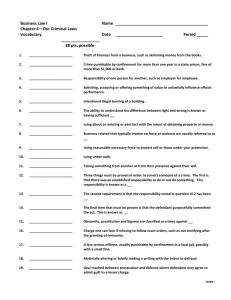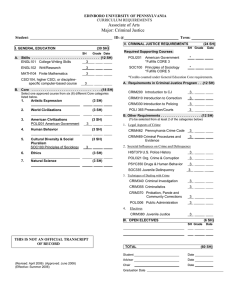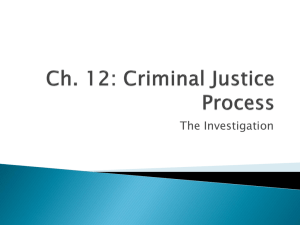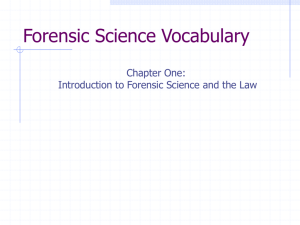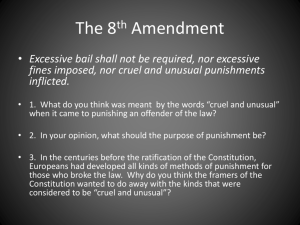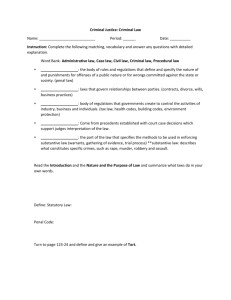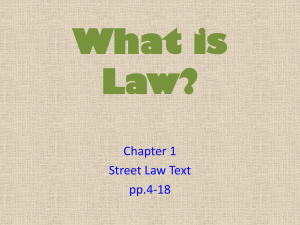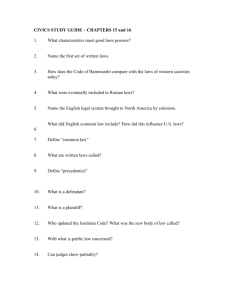Concept Check 14.2
advertisement
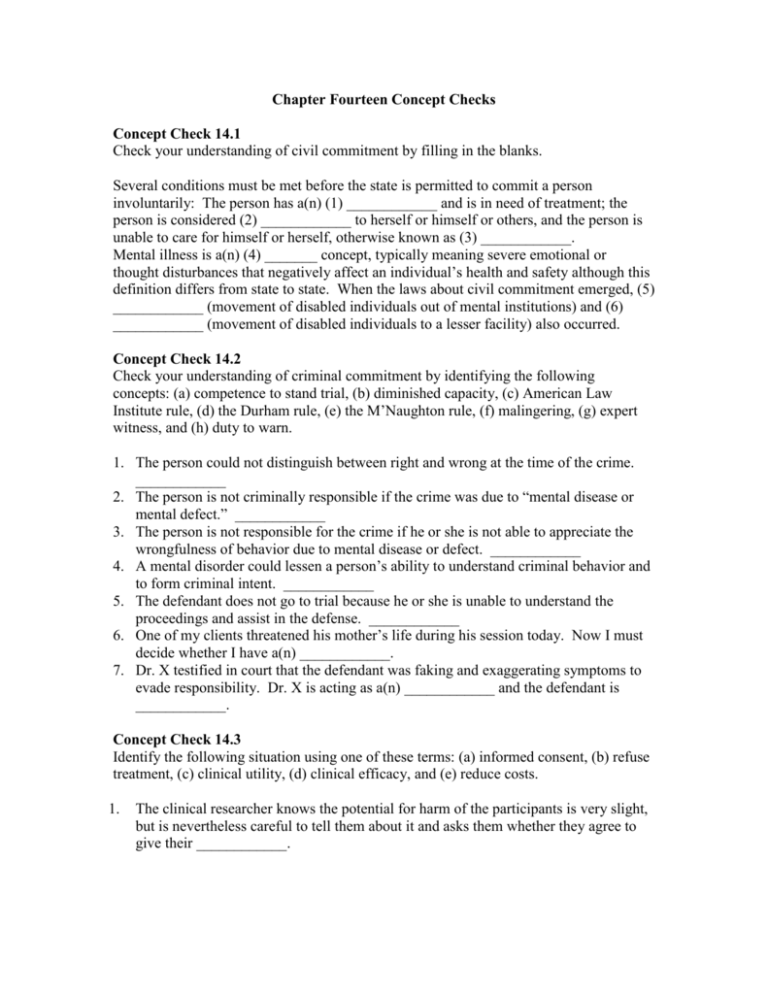
Chapter Fourteen Concept Checks Concept Check 14.1 Check your understanding of civil commitment by filling in the blanks. Several conditions must be met before the state is permitted to commit a person involuntarily: The person has a(n) (1) ____________ and is in need of treatment; the person is considered (2) ____________ to herself or himself or others, and the person is unable to care for himself or herself, otherwise known as (3) ____________. Mental illness is a(n) (4) _______ concept, typically meaning severe emotional or thought disturbances that negatively affect an individual’s health and safety although this definition differs from state to state. When the laws about civil commitment emerged, (5) ____________ (movement of disabled individuals out of mental institutions) and (6) ____________ (movement of disabled individuals to a lesser facility) also occurred. Concept Check 14.2 Check your understanding of criminal commitment by identifying the following concepts: (a) competence to stand trial, (b) diminished capacity, (c) American Law Institute rule, (d) the Durham rule, (e) the M’Naughton rule, (f) malingering, (g) expert witness, and (h) duty to warn. 1. The person could not distinguish between right and wrong at the time of the crime. ____________ 2. The person is not criminally responsible if the crime was due to “mental disease or mental defect.” ____________ 3. The person is not responsible for the crime if he or she is not able to appreciate the wrongfulness of behavior due to mental disease or defect. ____________ 4. A mental disorder could lessen a person’s ability to understand criminal behavior and to form criminal intent. ____________ 5. The defendant does not go to trial because he or she is unable to understand the proceedings and assist in the defense. ____________ 6. One of my clients threatened his mother’s life during his session today. Now I must decide whether I have a(n) ____________. 7. Dr. X testified in court that the defendant was faking and exaggerating symptoms to evade responsibility. Dr. X is acting as a(n) ____________ and the defendant is ____________. Concept Check 14.3 Identify the following situation using one of these terms: (a) informed consent, (b) refuse treatment, (c) clinical utility, (d) clinical efficacy, and (e) reduce costs. 1. The clinical researcher knows the potential for harm of the participants is very slight, but is nevertheless careful to tell them about it and asks them whether they agree to give their ____________. 2. 3. 4. 5. Recently, clinical practice guidelines were established on two axes. The ____________ axis is a consideration of the scientific evidence to determine whether the intervention in question is effective. The Supreme Court ruling in Riggins v Nevada (1992) helped support a patient’s right to ____________. The ____________ axis is concerned with an intervention’s effectiveness in the clinical setting where it will be applied, not in the research setting. Clinical practice guidelines are designed to safeguard clients and ______________. Answers to Concept Checks 14.1 1. mental disorder 2. dangerous 3. grave disability 5. deinstitutionalization 6. transinstitutionalization 14.2 1.e 2. d 3. c 4. b 14.3 1. a 2. d 3. b 4. c 5. a 5. e 6. h 7. g, f 4. legal





